- Cargo should have at least one tiedown for each 25 feet of cargo
- On flat bed trailers or trailers without sides, no matter how small the cargo is, it should have at least two tiedowns holding it
- The combined strength of all cargo tiedowns must be strong enough to lift three times the weight of the piece of cargo tied down
- On flat bed trailers or trailers without sides, cargo that weighs more than 10,000 pounds does not require a tie down
Quote From Page 53 Of The CDL Manual:
Cargo Tiedown - On flat bed trailers or trailers without sides, cargo must be secured to keep it from shifting and falling off. In closed vans, tiedowns can also be important to prevent cargo shifting that may affect the handling of the vehicle. Tiedowns must be of the proper type and proper strength. The combined strength of all cargo tiedowns must be strong enough to lift one and one-half times the weight of the piece of cargo tied down. Proper tiedown equipment must be used, including ropes, straps, chains, and tensioning devices (winches, ratchets, clinching components). Tiedowns must be attached to the vehicle correctly (hook, bolt, rails, rings).
Cargo should have at least one tiedown for each 10 feet of cargo. Make sure you have enough tiedowns to meet this need. No matter how small the cargo is, it should have at least two tiedowns holding it.
There are special requirements for securing various heavy pieces of metal. Find out what they are if you are to carry such loads.
- The summation of the working load limits or restraining capacity of all devices used to secure an article on a vehicle.
- The maximum load that may be applied to a component of a cargo securement system during normal service, usually assigned by the manufacturer of the component.
- The maximum load that may be applied to a component of a cargo securement system during normal service, usually assigned by the manufacturer of the component.
- The acceleration due to gravity, 9.823 m/sec2 (32.2 ft/sec2). For cargo securement purposes it is expressed as a percentage of cargo weight, i.e. .5g is 50% of force of gravity or 50% of cargo weight.
Quote From Page 1 Of The CDL Manual:
g:
The acceleration due to gravity, 9.823 m/sec2 (32.2 ft/sec2). For cargo securement purposes it is expressed as a percentage of cargo weight, i.e. .5g is 50% of force of gravity or 50% of cargo weight.
- At least one indirect tiedown side-to-side over the top of the coil.
- One direct tiedown on each diagonal through the eye of the coil
- Two indirect tiedowns over the front and rear parts of the coil.
- Two direct tiedowns on either side straight through the eye.
Quote From Page 3 Of The CDL Manual:
Securement Option #2:

Same as Option #1, except the direct tiedowns are straight instead of diagonal.
- A statement in the shipping packet which the receiver signs, saying the product has been received and in good condition
- A statement on a shipping paper, signed by the shipper, saying he/she prepared the shipment properly according to law
- A statement in the hazardous materials manifest, signed by the driver, saying he/she has inspected the shipment properly according to law
- None of these answers are correct
Quote From Page 114 Of The CDL Manual:
Shipper's Certification:
A statement on a shipping paper, signed by the shipper, saying he/she prepared the shipment properly according to law.
- BAC of .04
- Any amount
- BAC of .02
- BAC of .08
Quote From Page 8 Of The CDL Manual:
Illinois law requires drivers operating a commercial motor vehicle (CMV) or a non-commercial motor vehicle (nonCMV) on highways to automatically give their consent to submit to certain tests to determine blood-alcohol concentration (BAC). A CDL holder may not operate a commercial vehicle with a BAC of .04 or more or a noncommercial vehicle with a BAC of .08 or more.
- Any driver operating a CMV or non-CMV who refuses to submit to chemical testing or submits to a test with results in excess of the legal limit is disqualified for a minimum 12 months.
- Any driver convicted of DUI (regardless of BAC) is disqualified for a minimum 12 months.
- If either violation above takes place while transporting placarded hazardous materials, the driver is disqualified for a minimum three years.
- A driver who commits two of the above violations, arising from two or more incidents, is disqualified for life.
- A CDL holder operating a CMV found to have any alcohol in his or her system is placed out of service for at least 24 hours.
- Anyone convicted of driving a commercial motor vehicle with any amount of drug, substance or compound resulting from unlawful use or consumption of cannabis listed in the Cannabis Control Act or controlled substance listed in the Controlled Substance Act is disqualified for a minimum 12 months.
TruckingTruth's Advice:
CDL holders can be criminally charged for driving under the influence with a .04 BAC or higher, but will be placed out of service for 24 hours if any trace of alcohol is detected in their system
Which day below contains a 30 minute break violation?
Day 1

Day 2

- Day 2 contains at least one 30 minute break violation
- Day 1 contains at least one 30 minute break violation
- There are no 30 minute break violations on either day
- Both days contain at least one 30 minute break violation
Quote From Page 0 Of The CDL Manual:
Day 1

Day 2

Violations: There is a 30 minute break violation on Day 1 which occurred from 6:00 p.m. to 7:00 p.m. Then, on Day 2, there is another 30 minute break violation from 4:00 p.m. until 9:00 p.m. as well as an 11 hour rule violation from 4:00 p.m. - 9:00 p.m. and a 14 hour rule violation from 7:00 p.m. - 9:00 p.m.
Explanation - 11 Hour Limit: After 10 consecutive hours off duty, the driver had 11 hours of driving time available at 10:00 a.m. on Day 1. After driving 8 hours (3 + 2 + 3), the driver took 8 consecutive hours in the sleeper berth, which, combined with the earlier 2 consecutive hours in the sleeper from 5:00 p.m. to 7:00 p.m. on Day 1, made the driver eligible for the split sleeper berth provision. This moves the 11 hour calculation point to the end of the first of the two qualifying breaks, or 9:00 p.m. on Day 1. Between 9:00 p.m. on Day 1 and 8:00 a.m. on Day 2, the driver had 3 hours of driving, so at 8:00 a.m. there were 8 hours remaining (11 - 3), but he or she continued to drive for an additional 5 hours, after reaching the 11 hour limit at 4:00 p.m.
Explanation - 30 Minute Break: On Day 1, the driver remained on duty for more than 8 consecutive hours. While remaining on duty for longer than 8 consecutive hours is perfectly legal, the driver may not operate a CMV after being on duty for more than 8 consecutive hours unless a 30 minute break is taken. In the Day 1 example, the driver didn't meet that requirement until being on duty for 9 hours (1 hour beyond the limit), thereby violating the 30 minute break provision from 6:00 p.m. to 7:00 p.m. The driver also failed to take a 30 minute break on Day 2. Since the driver was on duty (driving) for more than 8 hours beginning at 4:00 p.m., all drive time after 4:00 p.m. was in violation of the 30 minute break provision.
Explanation - 14 Hour Limit: After 10 consecutive hours off duty, the driver had 14 hours available at 10:00 a.m. on Day 1. The driver reached the 14 hour limit at midnight (the 2 hour sleeper berth period is included in the 14 hour calculation because it is less than 8 hours). The driver then entered the sleeper berth for 8 consecutive hours and took advantage of the split sleeper berth provision. This moves the 14 hour calculation point to 9:00 p.m. on Day 1, the end of the first of the two qualifying breaks. Counting forward from there (and excluding the 8-hour sleeper period), the driver had 11 hours remaining as of 8:00 a.m. on Day 2. Those 11 hours were used up by 7:00 pm
- The speeds are safe for empty trucks
- These are not safe speeds for large or heavy vehicles
- The speeds are designed to be safe for large trucks
- The signs are generally posted at 10mph under the actual safe speed
Quote From Page 40 Of The CDL Manual:
Offramps/onramps: Freeway and turnpike exits can be particularly dangerous for commercial vehicles. Offramps and onramps often have speed limit signs posted. Remember, these speeds may be safe for automobiles but may not be safe for larger vehicles or heavily loaded vehicles. Exits that go downhill and turn at the same time can be especially dangerous. The downgrade makes it difficult to reduce speed. Braking and turning at the same time can be a dangerous practice. Make sure you are going slow enough before you get on the curved part of an offramp or onramp.
Is there a 14 hour rule violation on Day 2?
Day 1

Day 2

- Yes, at 7:00 a.m.
- No 14 hour rule violation occurs
- Yes, at 9:00 p.m.
- Yes, at 1:00 a.m.
Quote From Page 0 Of The CDL Manual:
Day 1

Day 2

Violations: There are no violations in this example.
Explanation - 11 Hour Limit: After 10 consecutive hours off duty, the driver had 11 hours of driving time available beginning at 2:00 a.m. on Day 1. The driver used those 11 hours by 4:00 p.m. on Day 1, when he or she entered the sleeper berth for 8 consecutive hours. Because the driver accumulated at least 10 hours of rest using a combination of at least 8 consecutive hours in a sleeper berth (4:00 p.m. to Midnight on Day 1) and another break of at least 2 consecutive hours (8:00 a.m. to 10:00 a.m. on Day 1), he or she was eligible for the split sleeper berth provision. This moves the calculation point to the end of the first of the two periods of rest, or 10:00 a.m. on Day 1. Starting the calculation from there, the driver accumulated another 10 hours of driving by 5:00 a.m. on Day 2. By 7:00 a.m. on Day 2, the driver accumulated another pair of qualifying breaks totaling at least 10 hours [4:00 p.m. to Midnight on Day 1 (8 hours) and 5:00 a.m. to 7:00 a.m. on Day 2 (2 hours)]. This moves the calculation point again, to the end of the first of the two breaks, or Midnight beginning Day 2. From there, the driver accumulated another 10 hours of driving by 1:00 p.m. on Day 2. The pattern of 8/2 split sleeper berth provisions continued, with no 11 hour violations.
Explanation - 30 Minute Break: On Day 1, the driver spent a total of 12 hours split between on duty and driving time. In order to continue driving beyond the 8th hour, a 30 minute break must be recorded. The calculation point on Day 1 is 2:00 a.m., so in order to continue driving after 10:00 a.m. (8 hours later), a minimum of 30 minutes must be spent off duty. In this example, the driver spent 2 hours in the sleeper berth from 8:00 a.m. to 10:00 a.m. and this satisfies the 30 minute break requirement, so no violation occurred. On Day 2, the driver first went on duty at midnight. In order to drive a CMV after 8:00 a.m. (8 hours later) a minimum of a 30 minute break off duty would be required. The driver met that requirement by taking a 2 hour break off duty (sleeper berth) break between 5:00 a.m. and 7:00 a.m. The hours spent driving between 9:00 p.m. and Midnight on Day 1 are also legal since an 8 hour break was taken between 1:00 p.m. and 9:00 p.m.
Explanation - 14 Hour Limit: Calculation of the 14 hour limit begins at 2:00 a.m. on Day 1. The driver accumulates 14 hours by 4:00 p.m. before entering the sleeper berth. Because the driver then met the requirements for the split sleeper berth provision, the calculation point moves to the end of the first qualifying break, or 10:00 a.m. on Day 1. So at Midnight leading into Day 2, the driver had accumulated 6 hours. By 7:00 a.m. on Day 2, the driver accumulated another pair of qualifying breaks totaling at least 10 hours and has not exceeded the 14 hour limit. This moves the calculation point again, to the end of the first of the two breaks, or Midnight leading into Day 2. From there, the driver accumulated 13 of 14 hours by 1:00 p.m. on Day 2. This split sleeper berth pattern continued, with no 14 hour limit violations.
- Less than 1 psi in 1 minute
- Less than 4 psi in 1 minutes
- Less than 2 psi in 1 minute
- Less than 3 psi in 1 minute
Quote From Page 66 Of The CDL Manual:
Test air leakage rate: With a fully-charged air system (typically 125 psi), turn off the engine, release the service brake, and time the air pressure drop. The loss rate should be less than 2 psi in 1 minute for single vehicles and less than 3 psi in 1 minute for combination vehicles. Then apply 90 psi or more with the brake pedal. After the initial pressure drop, if the air pressure falls more than 3 psi in 1 minute for single vehicles and more than 4 psi for combination vehicles, the air loss rate is too much. Check for air leaks, and repair before driving the vehicle. Otherwise, you could lose your brakes while driving.
TruckingTruth's Advice:
You really need to memorize the allowable air leakage rates. This will very likely come up on your written exam and will come up again during the pre-trip exam. Here's what you should memorize (create flash cards if you have to).
With the service brakes released (not depressing the brake pedal):
- Air loss rate should be less than 2 psi in 1 minute for a single vehicle.
- Air loss rate should be less than 3 psi in 1 minute for combination vehicles (vehicles with a trailer).
With the service brakes depressed (pressing the brake pedal):
- Air loss rate should be less than 3 psi in 1 minute for a single vehicle.
- Air loss rate should be less than 4 psi in 1 minute for combination vehicles (vehicles with a trailer).
Be sure to have that memorized. Very important!!
- 3
- 2
- 1
- 4
Quote From Page 2 Of The CDL Manual:
-
If load is 5ft or shorter, 1,100 lbs or lighter:
Minimum number of tiedowns: 1
-
If load is 5ft or shorter, over 1,100 lbs:
Minimum number of tiedowns: 2
-
If load is more than 5ft but less than 10ft:
Minimum number of tiedowns: 2



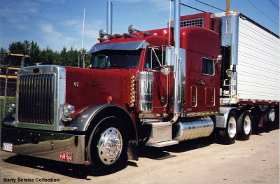


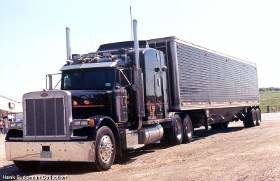



 ) to help you understand the materials better and gain an understanding for how that knowledge will fit into the overall picture.
) to help you understand the materials better and gain an understanding for how that knowledge will fit into the overall picture.

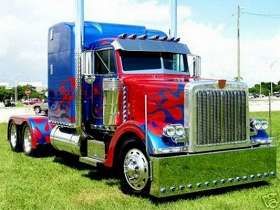


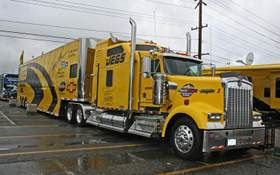
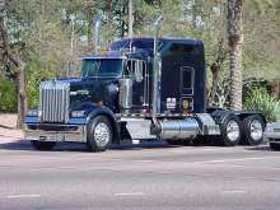







 TT On Facebook
TT On Facebook